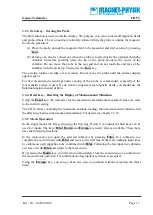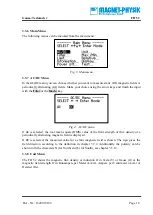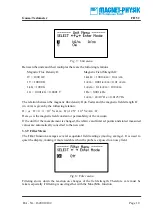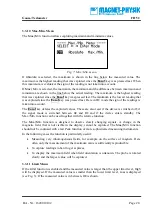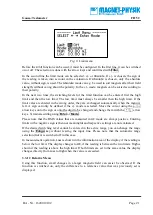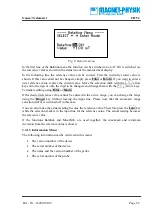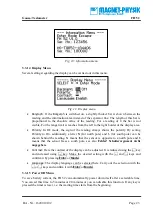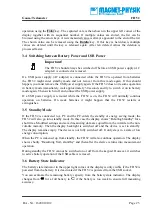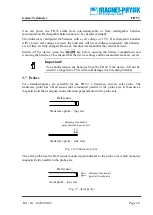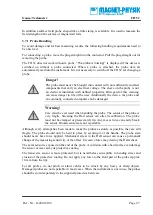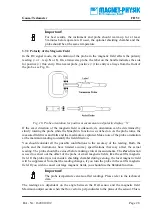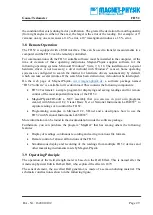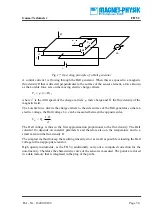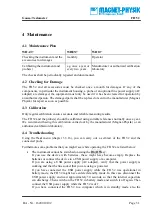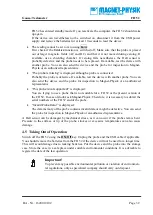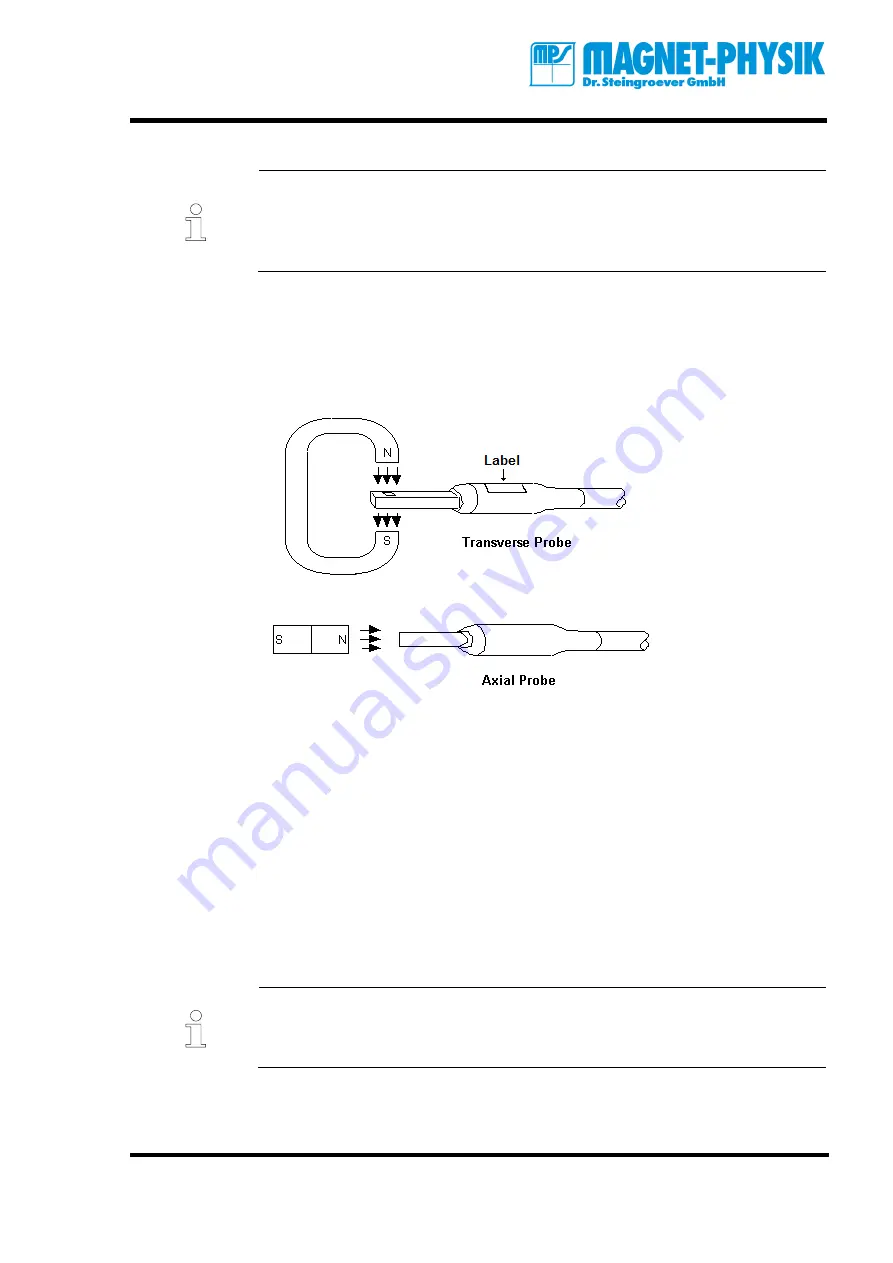
Gauss-/Teslameter
FH 52
BA - Nr.: 1620010102
Page 28
Important!
For best results, the instrument and probe should warm up for at least
5 minutes before operation. If used, the optional shielding chamber and the
probe should be at the same temperature.
3.7.2
Polarity of the Magnetic Field
In the
DC
signal mode, the orientation of the probe in the magnetic field affects the polarity
reading (+ or – resp.
N
or
S
). On a transverse probe, the label on the handle indicates the side
for positive (+) flux entry. On an axial probe, positive (+) flux entry is always from the front of
the probe, see Fig. 16.
Fig. 16: Probe orientation for positive measurement and polarity display “N”
If the exact direction of the magnetic field is unknown, its orientation can be determined by
slowly rotating the probe while the
Max./Min.
function is switched on. As the probe turns, the
measured field rises and falls and the maximum is captured. Make note of the probe orientation
at the maximum reading to identify the field direction.
You should consider all the possible contributions to the accuracy of the reading. Both, the
probe and the instrument, have limited accuracy specifications that may affect the actual
reading. The probe should be zeroed before making critical measurements. The
Zero
function
is used to cancel out the offset of the probe or small magnetic fields, like the earth’s magnetic
field. If the probe tip is not inside a shielding chamber during zeroing, the local magnetic field
will be suppressed. Note that the reading changes, if you turn the probe in the earth’s magnetic
field. If you wish to cancel out large magnetic fields, you should use the
Relative
function.
Important!
The probe temperature can also affect readings. Please refer to the technical
data.
The readings are dependent on the angle between the Hall sensor and the magnetic field.
Maximum output occurs when the flux vector is perpendicular to the plane of the sensor. This is




